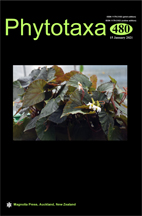Abstract
A new species of genus Rorippa, R. hengduanshanensis, from the Hengduan Mountains, is described herein. Comparing the floral structure and overall fruit morphology of R. hengduanshanensis with similar taxa (e.g., R. benghalensis, R. dubia, and R. indica) revealed a series of morphological differences, both qualitative and quantitative. R. hengduanshanensis differs from R. benghalensis in the ebracteate racemes; from R. dubia in the flattened silique, the presence of four petals and the ploidy level (2n=6x=48); and from R. indica in the uniseriate seeds. Phylogenetic analyses using three plastid markers (psbC-trnS, trnG-trnM, and trnL) further revealed clear interspecific divergences that can distinguish R. hengduanshanensis from its morphologically related taxa.

